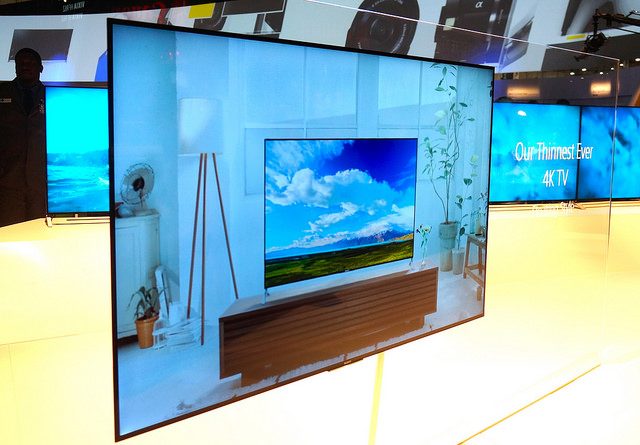HPA Tech Retreat: Broadcasters Consider UHD, IT and More
February 12, 2015
At the HPA Tech Retreat in Indian Wells this week, the Broadcasters Panel featured broadcast network executives answering audience questions about TV spectrum re-allocation, IT-based infrastructure, UHD, the emerging ATSC 3.0 standard, and the future of broadcast. Moderated by Ericsson’s Matthew Goldman, the panel included CBC/Radio Canada’s Maxime Caron; CBS’s Bob Seidel; FOX Networks’ Rich Friedel; NAB’s Skip Pizzi; PBS’s Mario Vecchi and Sinclair Broadcast Group’s Mark Aitken.
The panel’s first question came from HPA Tech Retreat program organizer Mark Schubin: When will broadcasters stop shooting and protecting for standard definition’s 4×3 display?
Seidel noted that, “only 36 percent of the homes are true HD, which means that the majority of homes are still watching Standard Definition TV.” PBS’s Vecchi agreed that, “a majority of our audience isn’t fully HD.”
“There’s a multicasting aspect,” he said. “Multiple channels are in SD. We would like to see everything wide format and HD but there’s a way to go.”
CPMs for mobile are now equal or greater than those for broadcast, said one audience member. What do broadcasters think? “We believe it’s better to aggregate all viewers together so we get a much better lift,” said Seidel. “If we can do that by including the mobile viewers, that helps us more than trying to segregate an ad sold only to the mobile device.”
With HDR, HFR, 4K coming down the pike, do all these acronyms collide at the broadcast station? “With UHD and HDR, we can offer the client a much better experience,” said Caron. “That also means you need to control that experience across devices and that’s where the challenge is.”
Much of the rest of the conversation focused on ATSC 3.0, the emerging TV standard that will enable next-generation broadcast, including Ultra HD. NAB’s Pizzi reported that numerous ATSC 3.0 key requirements are now in the process of being fulfilled while the standard is being written, with the target of arriving at a standard for testing later in 2015. Prototypes should show up in the 2016 time frame.
One key feature is the over-the-air throughput would be 30 percent better than the current ATSC format, said Pizzi. “Another element would be to use state-of-the art codecs for audio and video,” he added. “We’re two generations behind, so that will be a welcomed feature.”
HEVC is the only candidate considered for video; but Dolby, DTS and the MPEG-H Audio Alliance are vying to provide a new audio system.
ATSC 3.0 has more than one application, explained Aitken. “It is a convergence platform in my mind,” he said. “It’s about bringing content from multiple platforms together for the viewer.”
The future is about supporting multiple video and audio codecs, he added. “The days of a very monolithic standard are gone. What broadcasters have universally called for is an evolve-able flexible platform that allows us to compete in the real world. ATSC 3.0 is a means to break the mold and allow us to offer mobile and fixed services, both simultaneously if we wish, to offer consumers what they want.”
Where does the FCC stand on ATSC 3.0? According to Aitken, “the FCC has claimed a level of indifference.” He urged broadcasters to lobby lawmakers for a rewrite of the Communications Act, last rewritten in the 1990s and with not a single mention of the Internet.
“Broadcasters have to present a face as an industry that’s not just willing but eager to change, to bring opportunities to consumers not available today,” he said. “This is the opportunity for broadcasters to present themselves as an option to wireless operator.”



No Comments Yet
You can be the first to comment!
Sorry, comments for this entry are closed at this time.